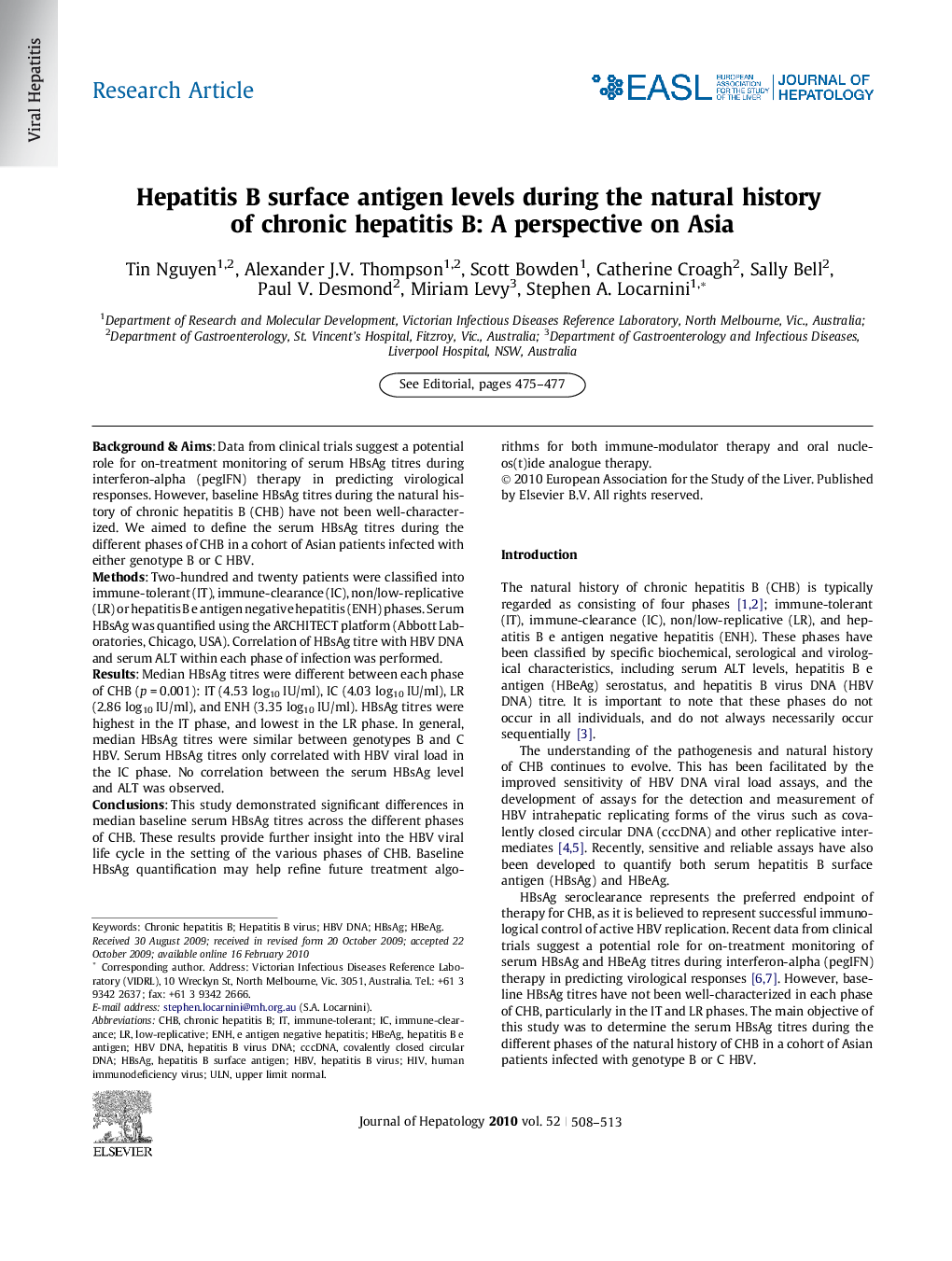| Article ID | Journal | Published Year | Pages | File Type |
|---|---|---|---|---|
| 6107530 | Journal of Hepatology | 2010 | 6 Pages |
Background & AimsData from clinical trials suggest a potential role for on-treatment monitoring of serum HBsAg titres during interferon-alpha (pegIFN) therapy in predicting virological responses. However, baseline HBsAg titres during the natural history of chronic hepatitis B (CHB) have not been well-characterized. We aimed to define the serum HBsAg titres during the different phases of CHB in a cohort of Asian patients infected with either genotype B or C HBV.MethodsTwo-hundred and twenty patients were classified into immune-tolerant (IT), immune-clearance (IC), non/low-replicative (LR) or hepatitis B e antigen negative hepatitis (ENH) phases. Serum HBsAg was quantified using the ARCHITECT platform (Abbott Laboratories, Chicago, USA). Correlation of HBsAg titre with HBV DNA and serum ALT within each phase of infection was performed.ResultsMedian HBsAg titres were different between each phase of CHB (p = 0.001): IT (4.53 log10 IU/ml), IC (4.03 log10 IU/ml), LR (2.86 log10 IU/ml), and ENH (3.35 log10 IU/ml). HBsAg titres were highest in the IT phase, and lowest in the LR phase. In general, median HBsAg titres were similar between genotypes B and C HBV. Serum HBsAg titres only correlated with HBV viral load in the IC phase. No correlation between the serum HBsAg level and ALT was observed.ConclusionsThis study demonstrated significant differences in median baseline serum HBsAg titres across the different phases of CHB. These results provide further insight into the HBV viral life cycle in the setting of the various phases of CHB. Baseline HBsAg quantification may help refine future treatment algorithms for both immune-modulator therapy and oral nucleos(t)ide analogue therapy.
